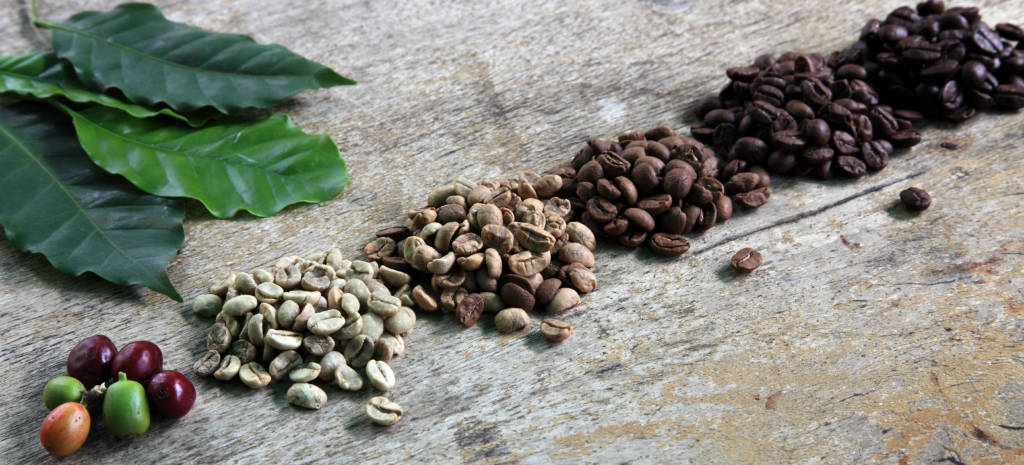If you’ve been drinking coffee for any length of time you’ve probably tried coffee roasted at different levels and have found just what you like. But in case you haven’t tried other roast levels or haven’t found that coffee flavor you love, here is some information about roast profiles and what to expect from each.

Why Different Roasts?
Coffee is roasted to different levels to highlight or bring out flavors in the beans. At CoffeeAM, our Roast Master has determined the level at which each of our coffees tastes the best. Generally, lighter roasts are for coffees that already have a good flavor that prolonged roasting can have a detrimental effect on. Darker roasts add complexity, allow oils in the coffee to come out, and can change the flavor immensely.
What About Caffeine Content?
Contrary to popular belief, darker roasted coffees actually have less caffeine than lighter roasted coffees. A darker roast will have a stronger, more robust flavor, but the jolt of caffeine in espressos or espresso-based drinks comes more from the coffee to water ratio. When making espresso, the coffee beans are ground very fine and those grounds are packed tightly into the filter basket. The tiny grind makes for a lot of surface area for water to pull flavor and caffeine from. Also, the larger your espresso-based drink, the more shots of espresso. Long story short, when you’re looking for a caffeine boost, you can have a large latte or cappuccino, or you can have a smaller lighter roast coffee.
Light Roast
So now we have determined why the difference in roasts and how the caffeine process works, let’s start with light roasts and see what we might expect. A light roast is best when working with high quality and flavorful beans. This roast allows the natural flavors to come out. Delicate and fruity tend to be terms used to describe coffees that have a light roast. As coffee is being roasted, the beans will make a cracking noise at different temperatures. Light roast happens just before the “first crack” stage. The beans will be at to about 355℉ and 400℉. The beans will be a light brown color, about the color of a cinnamon stick. Names for this roast are Light City, Half City New England Roast, or Cinnamon Roast. The coffee will be completely dry at this point. No oils will have been secreted. For light roasted coffees, check out
this link.
Medium Light Roast
At medium light, the coffee beans start getting a little darker. We are now into the first crack stage at around 405℉ to 415℉. The beans will be slightly darker, and the flavor will be a little brighter and though the flavor of the bean is still prominent, you will start getting flavors from the roasting. These new flavors are reminiscent of brown sugar, baking spices, and toasted nuts. This roast level still sees no oil on the bean. Find our medium light roast coffees
here.
Medium Roast
Now we’re getting into some darker colors and more interesting flavors. Medium roast is the favorite roast level for most coffee houses. We are now firmly in the first crack stage and the temperature of the beans is between 410℉ and 445℉. Flavors added by a medium roast are getting into the caramels and chocolates. This roast level can start to mask flavors that are less desirable in the beans. A medium roast also tends to add more body and balances out the coffee. Still no oil on the surface of the beans. Also known as City, Regular, Breakfast, and American Roast.
Here is where you can get your medium roasted coffees.
Medium Dark Roast
The medium dark roast finally starts seeing a sheen of oil on the bean surface. We are at the beginning of the second crack stage at 435℉ to 445℉. The flavors are much more toward the roasting process and no flavors of the bean are left. At this level, you will notice the bittersweet flavors of dark chocolate, vanilla bean, and even porter beer. This roast is also known as Vienna, After Dinner, and Full City Roast. Medium dark roasted coffees can be found on
this page.
Dark Roast
Ah, with the dark roast we’re now looking at espresso-type coffees. At this level of roast, the coffee is a deep brown and can be almost black. We are well into, and sometimes even past, the second crack stage and the temperature inside the beans is around 465℉ to 485℉. Flavors of smoke, bitter black tea, extremely dark chocolate, and burnt toast prevail and there is no longer any natural flavor of the bean left. The beans will have a shiny look to them due to the oils inside the beans being released. These coffees are ideal for your cappuccinos, mochas, and lattes. Other names for this roast include New Orleans, Italian, Espresso, French, and Continental. Get your dark roasted coffees
here.
Explaining what each of these coffees looks and tastes like is one thing, but we highly suggest you try different roasts yourself and find what you like best. You may be surprised by some of them!


